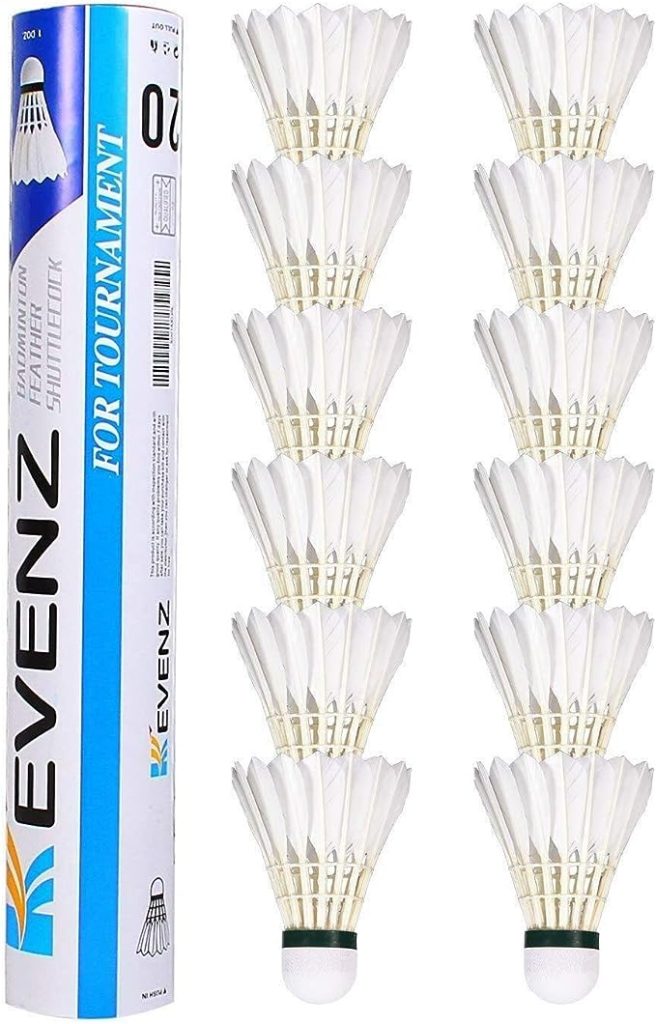
The flight of a shuttlecock in the game of badminton is a fascinating interplay of physics and aerodynamics. From the initial serve to the precise shots executed during rallies, understanding the science behind shuttlecock flight is crucial for players to master the game. In this article, we will explore four key points that shed light on the scientific principles governing shuttlecock flight, helping players enhance their understanding and control of this essential aspect of the sport.
Drag and Shuttlecock Feather Design
Drag is a significant force that affects the flight of a shuttlecock. As the shuttlecock moves through the air, it experiences air resistance, which creates drag. The design of the shuttlecock’s feathers plays a crucial role in managing this drag force. The feathers are typically arranged in a conical shape, with longer feathers at the back and shorter feathers at the front. This arrangement helps create an optimal balance between lift and drag.
The feathers’ curved shape generates lift, allowing the shuttlecock to stay aloft and travel further. At the same time, the feathers’ lightweight and flexible nature minimize drag, enabling the shuttlecock to achieve high speeds. Manufacturers continuously experiment with feather materials, densities, and arrangements to optimize flight performance, providing players with shuttlecocks that offer the right balance of lift and drag.
Shuttlecock Speed and Impact Dynamics
When the shuttlecock is struck by the racket, the speed at which it is hit directly affects its flight characteristics. According to Newton’s third law of motion, for every action, there is an equal and opposite reaction. As the racket applies force to the shuttlecock, the shuttlecock reacts by accelerating in the opposite direction.
The speed of the shuttlecock at impact determines its initial velocity, which affects its flight path and distance covered. A powerful smash will result in a higher initial velocity, causing the shuttlecock to travel with greater speed. Conversely, a softer shot will have a lower initial velocity, resulting in slower flight.
Understanding the impact dynamics allows players to adjust their techniques and choose the appropriate shots for different situations. By applying the right amount of force and timing their shots correctly, players can control the speed and flight path of the shuttlecock to gain an advantage during rallies.
Spin and Shuttlecock Trajectory
Spin plays a crucial role in shuttlecock flight, affecting its trajectory and bounce. When a player imparts spin on the shuttlecock, it creates a pressure difference on either side, causing the shuttlecock to curve in the air. This phenomenon, known as the Magnus effect, is responsible for the path variations observed during shots.
Topspin, where the shuttlecock rotates forward, results in a downward trajectory, making the shuttlecock dip quickly over the net. This shot is commonly used for aggressive smashes or accurate drop shots. On the other hand, backspin imparts upward rotation, causing the shuttlecock to lift higher and travel further. Backspin is often employed for defensive clears or lobbing shots.
Understanding the effects of spin allows players to manipulate the shuttlecock’s trajectory, making it difficult for opponents to anticipate and return the shot. By adjusting the racket angle and timing their shots, players can control the spin, resulting in shots with unique flight paths and unpredictable bounces.
Air Resistance and Shuttlecock Shuttle Speed
Air resistance, or drag, has a significant impact on the shuttlecock’s shuttle speed, which refers to the speed at which it travels across the court. As the shuttlecock moves through the air, it encounters resistance, which slows it down. The design of the shuttlecock, including the feather arrangement and base material, plays a crucial role in managing this resistance.
Shuttle speed is affected by factors such as altitude, humidity, and temperature, which influence air density and, consequently, the resistance encountered by the shuttlecock. Higher altitudes and lower temperatures result in lower air density, reducing the resistance and allowing the shuttlecock to travel faster. Conversely, in humid conditions or at lower altitudes, with higher air density, the resistance increases, slowing down the shuttlecock.
Players must adapt their gameplay and adjust their shots based on the shuttle speed. A faster shuttle requires quick reflexes and precise timing, whereas a slower shuttle allows for more controlled and accurate shots. Understanding the impact of air resistance on shuttle speed helps players make informed decisions, adapt their playing style, and maximize their performance on the court.



 The badminton shuttlecock, often referred to as the “feathered weapon,” has played a significant role in the sport of badminton for centuries. This article delves into the fascinating history of the shuttlecock, exploring its evolution, design, and influence on the game. In this comprehensive overview, we will highlight four key points that shed light on the rich history and significance of the
The badminton shuttlecock, often referred to as the “feathered weapon,” has played a significant role in the sport of badminton for centuries. This article delves into the fascinating history of the shuttlecock, exploring its evolution, design, and influence on the game. In this comprehensive overview, we will highlight four key points that shed light on the rich history and significance of the 



